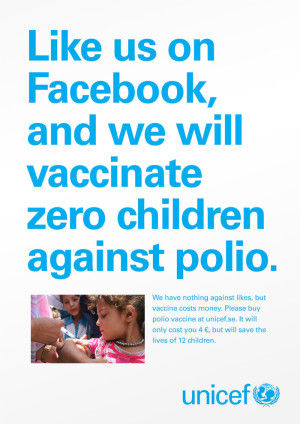What Are You Going To Do With All Those Likes?
- Fahad H

- Aug 22, 2013
- 3 min read
I’m a Facebook fan of at least 20 local attractions, shops and restaurants that I’ve never visited. The neighborhood antique store where I’ve been meaning to drop in. The city tour I always think I’ll take one day. The dozen or so foodie-approved eateries that I’ve got on my short list.
I’m a potential customer for all of them, and I love that social media makes it so easy for me to keep up with them.
But, I’m not an actual customer of any of these establishments — not yet. At this point, my “like” doesn’t really do anything for these businesses. (And, if we’re being honest, my Twitter follow means even less.)
So why are so many social media marketers still impressed by fan and follower counts and other metrics that are getting us nowhere?
It’s gotten so bad that a brand like Chipotle feels like it has to fake a Twitter hack to get some attention (in quite possibly the most poorly-conceived social media promotion I’ve ever heard of). Some social media pundits even called the stunt a success, noting that it brought the chain 4,000 new followers (compared to about 250 on a normal day).
But followers — especially ones that show up just to gawk at a Twitter train wreck — don’t equal burritos sold. And similarly, “liking” a store on Facebook doesn’t mean I’m going to visit, let alone buy.
At its core, social media is all about creating potential. A great social media campaign can raise brand awareness, build your reputation and put you in front of the right people.
But an even better social media campaign does the work to make sure that potential turns into action.
In the nonprofit and fundraising world, there’s a phenomenon known as slacktivism — basically, the idea that changing your Facebook profile picture in support of a cause is as good as donating money or time to that cause.
Earlier this year, UNICEF launched a great campaign that cut to the heart of the trend with this image.

It’s a bold stance for a nonprofit. Maybe the ad even makes you feel a little guilty. But perhaps when your mission is saving children’s lives, you’re able to cut to the core of the issue a little more clearly than your average brand. And that’s not a bad thing.
UNICEF put into words what anyone in charge of a social media presence (not just nonprofits) needs to realize: Facebook likes and Twitter followers aren’t a substitute for real action.
Ready to move your social media strategy — and fan base — from potential to action? Here’s how to get started:
Get The Right Kind Of Attention
When you worship at the temple of “brand awareness” at all costs, you can mastermind all sorts of crazy stunts to get on people’s radar.
But not all brand awareness is created equal. If getting people to pay attention to you briefly were all it took to be great at social media, the folks behind total brand meltdowns like Amy’s Baking Company would be social media geniuses.
Yes, Chipotle’s Twitter hack stunt got people talking — the tweets were retweeted about 12,000 times, compared to about 75 per day normally — but was this the kind of awareness that leads to action?
When it’s your campaign, make sure people are talking about you for the right reasons.
Keep Them On The Hook
A Facebook fan or Twitter follower doesn’t mean much yet — but it’s a start. Each one opens the door to a future relationship, but it’s up to you to nurture it. Share content worth talking about. Ask questions. Have a personality fans want to get to know. An engaged social media fan — one who’s getting to know and like you — is one step closer to taking action.
Optimize For Action
And what is the action that really matters? That’s up to you to decide. Define the one thing you really want your social media followers and fans to do. Whether it’s visiting your website, coming to your store, donating money or even just signing up for an newsletter — that’s the action that matters.
Once you know that action, you can start to optimize for it and create better content in support of it. Now you have the start of a social media strategy!
Measure What Matters
You don’t have to stop measuring likes, follows and other so-called “vanity metrics” altogether. Those numbers are fine for charting your progress over time and even analyzing patterns to find what drives your audience. Just don’t make them the star of the show. Focus on measuring what matters instead.
The potential of social media is virtually unlimited. But all the likes, follows and Facebook statuses in the world don’t make things happen. So, what are you going to do with them?








Comments